Temps are falling, the constant watering of thirsty potted plants is over, and you’re breaking out your fall wardrobe — the mosquitos will be gone soon right? So do you really need to keep battling the mosquitos when they’ll soon disappear? Yes! Fall mosquito control is key. As long as it is warm enough for the mosquito larva to pupate and emerge as adults, you want to “stay in the game.” Giving up or becoming lax with controlling mosquito breeding sites in the Fall can destroy all of your hard work from earlier in the season. At the very least it’s a missed opportunity.
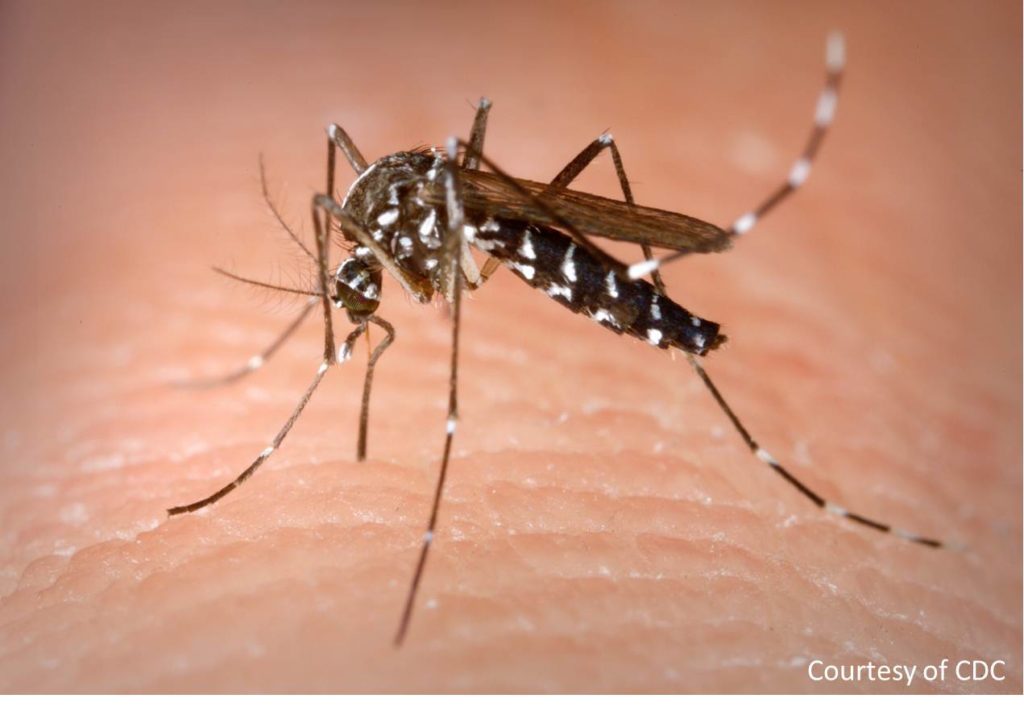
To understand why, we need to look at the life cycle of a mosquito. This can differ based on the species, but we will focus on the life cycle of Aedes Albopictus(pictured above). Also known as the Asian Tiger Mosquito, it is the most prevalent mosquito we see in our customers’ yards. It’s life cycle is also very similar to many other mosquito species.
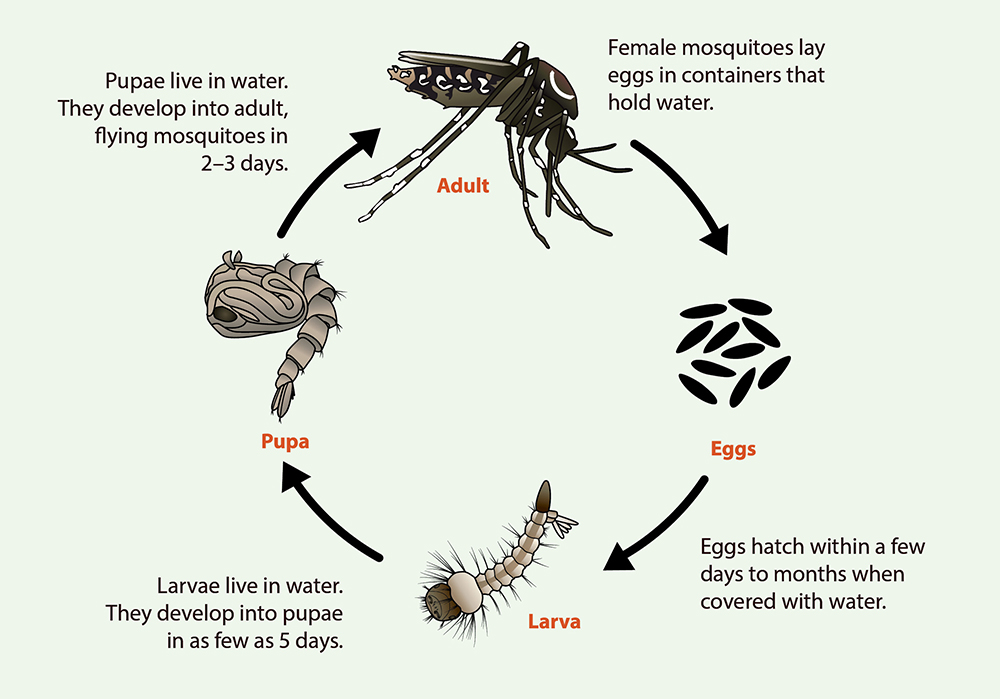
Now the key thing here is that the Aedes Albopictus mosquito over winters in the form of eggs. Essentially, as it gets colder, the percentage of eggs that will hatch gets smaller until zero mosquito larva are hatching during winter. The remaining eggs are then the over wintering eggs. For Aedes Albopictus, the key temperature is an average daily temperature of 50 degrees (source). Above this point, a significant number of mosquito larva will hatch, pupate, and emerge as adults. Below this point for a few days, most of the eggs that haven’t hatched will instead over winter. So when does that occur in Maryland?
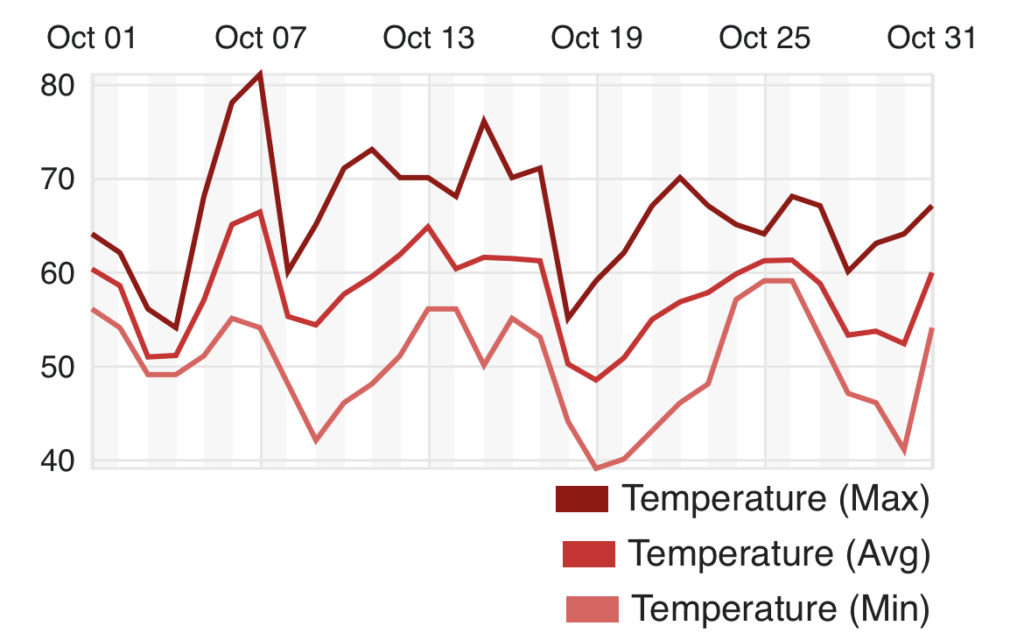
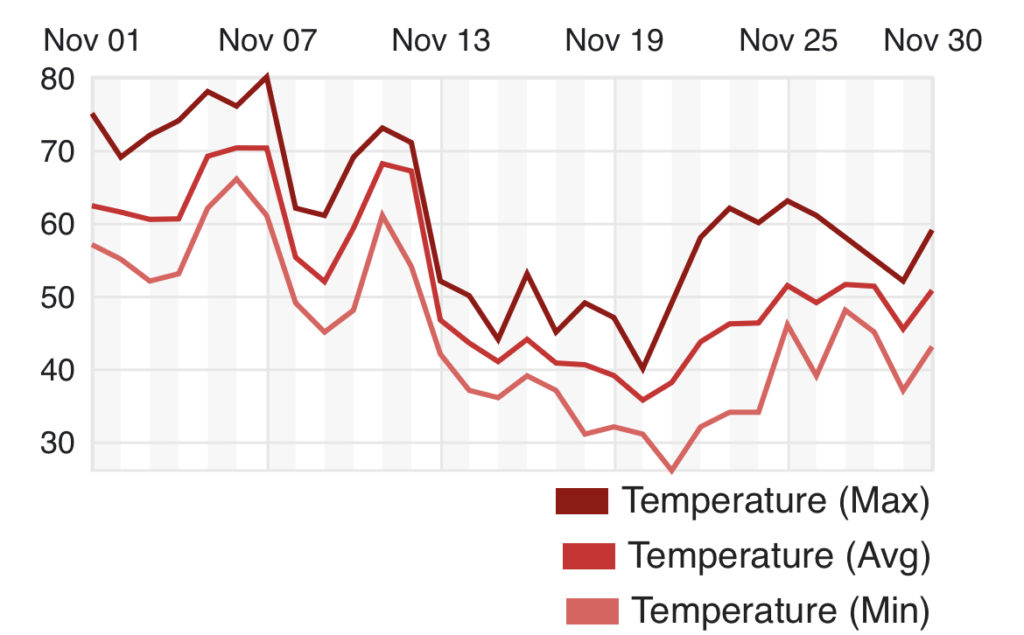
As you can see from the historical weather data from 2022 for Silver Spring (credit to Weather Underground), we didn’t have a significant dip below an average daily temp of 50 degrees until mid November. So for September, October, and the first half of November, if you weren’t performing Fall mosquito control, mosquitos were actively emerging, breeding, and laying eggs. The same eggs then hatched in Spring of 2023.
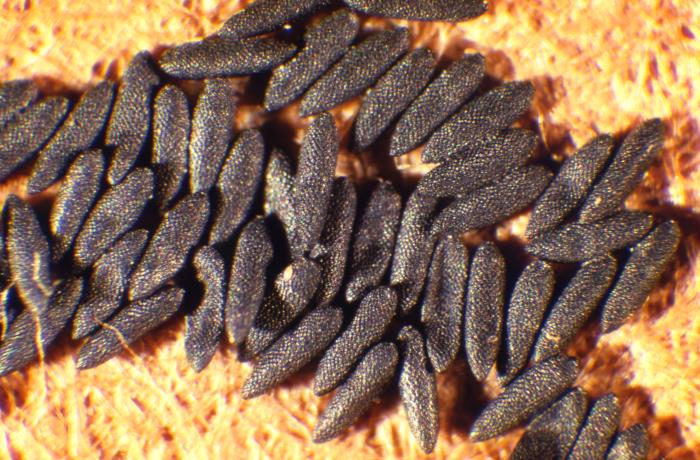
Not continuing the fight against mosquitos in the Fall just means more mosquito eggs that are laid in fall. These then over winter, and hatch next Spring. But by continuing Fall mosquito control and targeting the mosquitos through the entire breeding season, we can make meaningful reductions in their population that will be reflected in Spring with a lower starting population. This is why we do not offer monthly treatment options and only offer entire season or remainder of season packages. To really be effective you have to take every opportunity you can to lower the mosquito population.
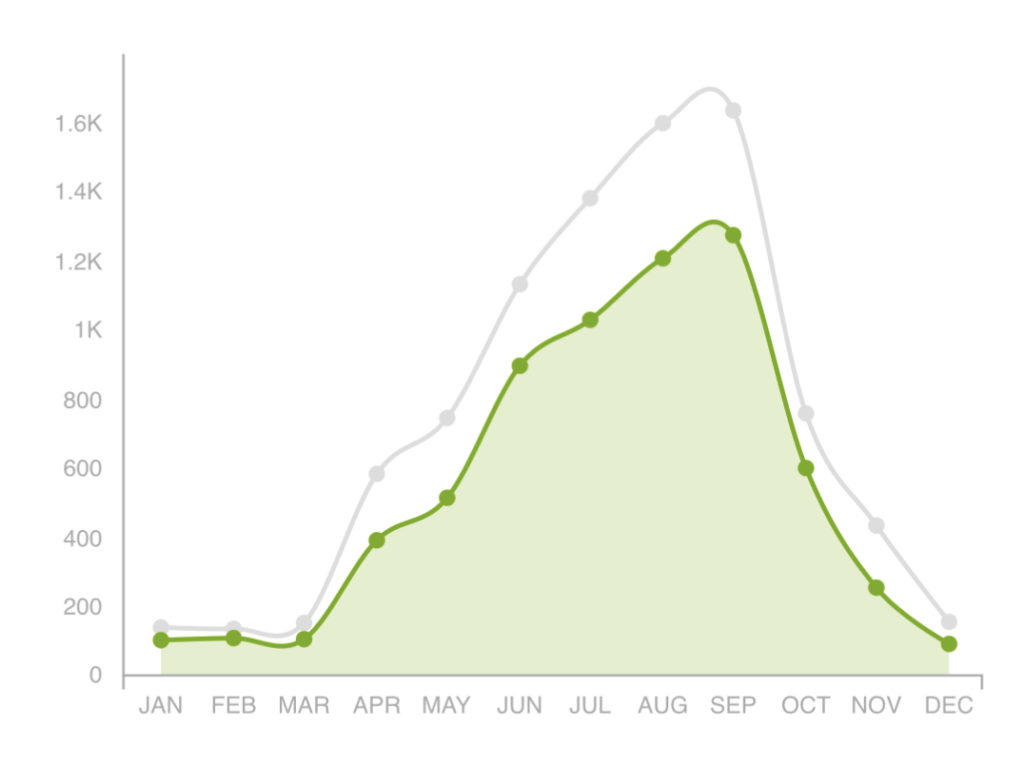
In fact, as shown in the graph above (credit iNaturalist), you can see that for Aedes Albopictus, the population size is actually largest in September. Those mosquitos hatching in September and October are the ones laying the over wintering eggs. So it is absolutely key that we minimize the number of mosquitos emerging in September and October with Fall mosquito control. By targeting these mosquitos specifically, we can hit the mosquitos at a point of vulnerability as they prepare for winter. This gives us a big leg up for next Spring. You can also see from this graph why your first treatment will be in late March or April, and why your last treatment will be in late September or October. At Bee-Safe we target mosquitos for the entire breeding season. Request a quote today for your fall mosquito control needs.
